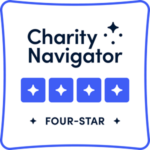
Chalkboard Chats is an interview series highlighting the teaching artists who dedicate their time and expertise to ArtsConnection students.
Dani Criss is an artist whose scope is as encompassing as her mission: to bring attention to un(der)acknowledged social issues. A trained dancer and actress, there are few mediums Dani hasn’t conquered. With performance credits across the country, ArtsConnection students are particularly lucky to have her. She sits down with us to talk community, liberation and building a safe space for students and artists alike.

What’s your earliest memory of being moved by art?
I have memories of dressing up and creating characters for my family, as well as singing the theme to my favorite shows at the top of my lungs. A fond memory is seeing The Lion King on Broadway for the first time when I was 10 years-old and shedding tears, knowing what I wanted to do for the rest of my life.
What kind of music did your parents play while you were growing up… and did the apple fall far from the tree?
My family played good music, good storytelling music, music that taught me a lot about myself and my history. I still today play the classic jams that are 50 years before my time!
Describe your primary school arts education in three words.
Specials/electives, low funded, [my] favorite class.
How long have you been teaching with ArtsConnection?
Two years.
What has been one of the biggest challenges?
Like all of us, the pandemic and surge of social justice made a major impact on every single move we make. Moving to the virtual platform and rapidly needing to continue life as “normal” gave a false reality to how we were living and dealing with our current state. Pushing forward and acknowledging where we are was a tough balance, personally – but even more so in the classroom, where community, liberation, and celebration through movement is at the forefront.
Any surprising rewards?
On the flip side, to see the innovation and resiliency to come from this time has been immeasurably beautiful. The dedication from teachers, staff, artists, students, and parents to ensure that arts education continues to thrive and nourish us all through this time.
How has teaching children changed your outlook on art?
Teaching children has reminded me of the power of art and cultural lineage. I am reminded that in any [environment], I seek the creation of a collaborative and safe space for all to be taught and to be nurtured. Through our individual experiences and interests we all have something to offer to the table.
Name an artist – living or dead – you’d like to have dinner with and why.
Nina Simone, because she understood the power and the essence of obtaining the aspect of freedom; would love to know what that was like for her as I continue on my own journey and inspire others in theirs.
Time management is hard. Any tips on managing a personal artistic practice with a teaching career?
It’s helped me to be aligned in all aspects of my work. My teaching and artistic principles are the same across the board. No matter the medium of my work, the same message is being implemented, which keeps me grounded in what I stand for.
In your own words, describe why the work we do at ArtsConnection is important.
ArtsConnection is a part of the imperative and overdue work of dismantling and the rebuilding of the education structure through the arts for children and youth. I’m excited to see how this work continues to shape the way future generations are learning and valued.


